Inside Canada's polar bear 'jail' where bears go without food and are kept behind bars — but it's not what you might think

Churchill, Canada, has a polar bear population that matches its human population.
The town's Polar Bear Holding Facility, aka "jail", helps bears and humans live harmoniously.
The facility is only reserved for the most unruly bears that pose a threat to town residents.
Churchill, Canada, is nicknamed the "polar bear capital of the world" with good reason.
It's the only town in the world where people and polar bears live in close proximity — and the only town that has a polar bear "jail", aka the Polar Bear Holding Facility.
This former military base lies on the edge of the Arctic in the Manitoba province. It's home to about 900 permanent residents and roughly the same number of polar bears that live on the ice of the nearby Hudson Bay.
Each year at the end of July, the bears come off the melting sea ice in to spend their summers in Wapusk National Park.
Churchill lies between the two, which makes it a busy spot for bear traffic.
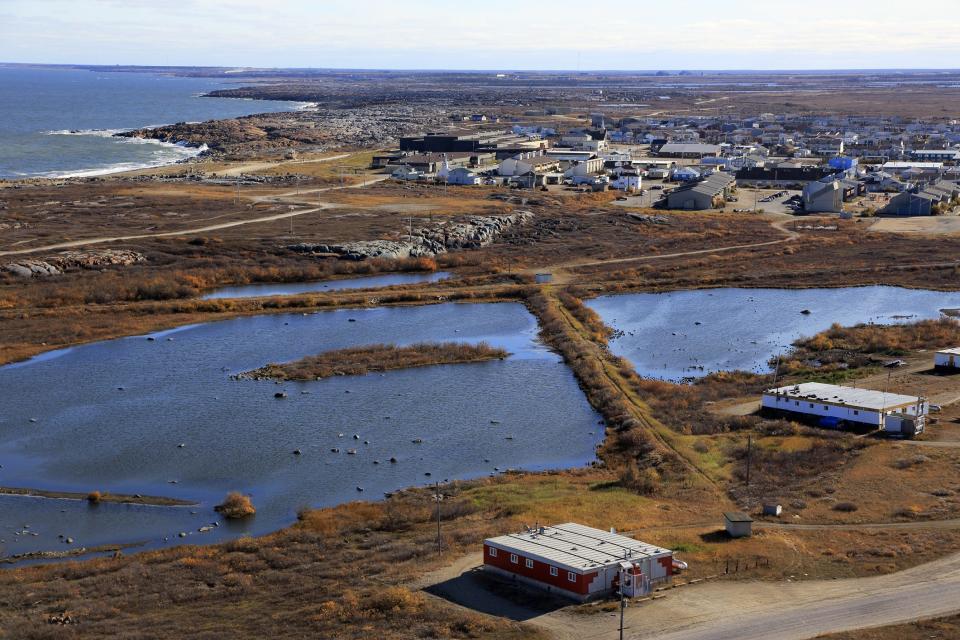
In October and November, the ice begins to form again, and the bears make another mass exodus back to the ice to hunt seals.
By the fall, they're hungry and willing to eat almost anything. Thus, bears are most likely to show up in or near Churchill during the first three weeks of November, before the bay freezes, a spokesperson from the province told Insider.
So, how does the town keep residents and tourists safe from chance encounters with the largest land carnivore on Earth? With a unique Polar Bear Alert program, the only one of its kind in the world, said Chantal Cadger Maclean, a conservation officer who works for the program.
How the bears end up in jail
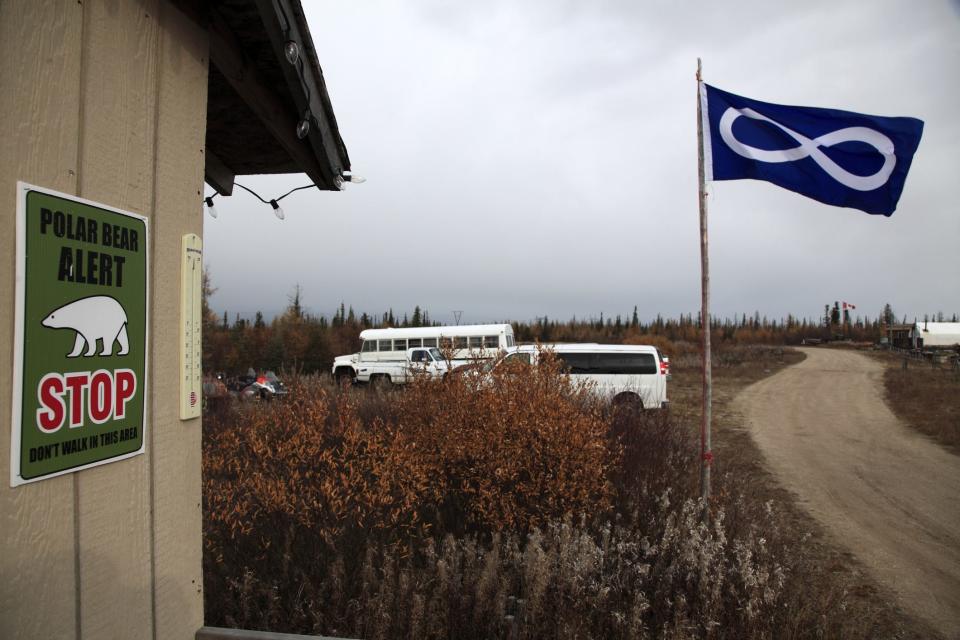
Bears occasionally venture into town before "bear season" begins in early November.
"Earlier in the year they're fat and happy from eating seals, so they're not actively looking for food," Maclean said. "But they're opportunistic hunters, so if something's around, they'll eat it."
"Something" usually means garbage that isn't contained properly. Humans generally don't make up part of a polar bear's diet, but a starving bear won't be picky.
So, because bears visiting town are more likely to have a dangerous encounter with humans, conservation officers aim to get them out of town as quickly and safely as possible.
The bears get plenty of chances to leave town before they're trapped and taken to the Polar Bear Holding Facility, Maclean said, and the first step involves lots of loud noise.
Anytime someone calls the Polar Bear Alert number (that's 204-675-BEAR), the conservation officers on call drop what they're doing and rush to the location.
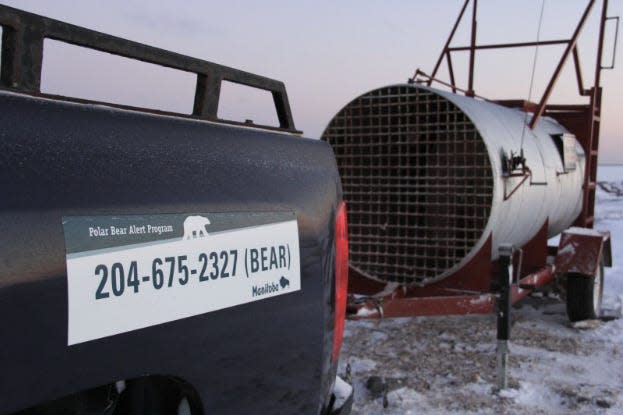
They use horns, sirens, and "screamers," which are shotguns loaded with scare cartridges, to gently encourage and guide the bear west out of Churchill. Helicopter teams can also spot bears hiding in the rocks and drive them farther away from town.
Bears are very receptive to loud sounds, so these methods usually work, Maclean said — though occasionally, officers may need physical deterrents like rubber bullets or paintballs to help move more stubborn bears along.
But a few bears aren't scared of humans and refuse to leave town.
And bears who've learned to associate people with food sources might come back to check out trash cans and visit the waste management facility. These are the bears that end up in the holding facility at the edge of town.
"We only go hands-on with bears when they won't be hazed, and we know if we allow them to continue displaying the same behavior, they'll have a negative encounter," Maclean said. "It's a bear's last step, as bears who have negative encounters with people have to be euthanized."
But euthanization doesn't happen often, thanks to the success of the program
Doing time in polar bear jail
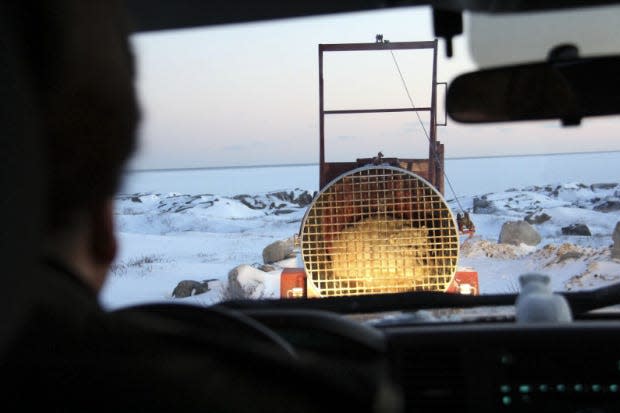
Conservation officers trap bears in one of two ways: using a dart gun containing Telazol to immobilize them or baiting a culvert trap with seal meat.
From there, they bring the bear to one of the facility's 28 cells. These include large cells for groups of mothers and cubs, air-conditioned cells to keep bears cool in the warmer months, and individual cells.

The team takes measurements, like length and girth, and gives the bears ear tags for tracking purposes. Then, the captured bears stay in the facility for 30 days or until ice begins to form on Hudson Bay — whichever comes first.

"If there's enough ice on the bay to physically drive trucks with bears in the trap onto the ice, we let them go and typically we never see them again," Maclean said. Otherwise, they release the bears by helicopter along the coast, far out of town.
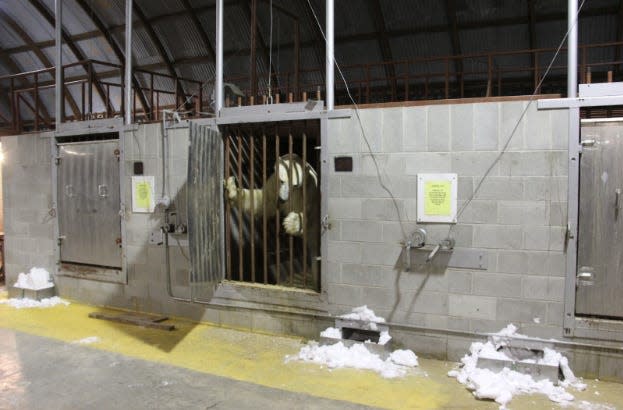
Bears don't get fed in the facility, though they do get water and snow.
Giving the bears food would teach them to associate food with people and make it more likely they'd come back to town, Maclean said, adding that going without food doesn't harm the bears, since they live off their fat stores in the summer months and typically wouldn't be eating anyway.
The point is to give them an experience they won't want to repeat.
The program aims to protect both bears and humans
The Polar Bear Alert program exists first and foremost to keep people safe, Maclean said. Its second main goal is protecting polar bears, currently classified as a vulnerable species.
The holding facility isn't a punishment for "bad" bears. "These bears aren't bad at all. They're just trying to do what bears do — get on the ice and make their living," Maclean said.

But as the global climate warms and sea ice dwindles, bears are increasingly likely to venture toward humans in search of food, which puts both humans and bears at risk.
So, this predator coexistence program manages Churchill's bears instead of killing them, which was standard practice before the program's introduction in the late 1960s.
Many more bears would get shot without the program, Maclean said.
Because bears can show up in Churchill any time, the alert program and holding facility operate year-round — and the program works. Churchill hasn't had a fatal bear attack since 1983, said a spokesperson from the province. Maclean said two people were injured in a 2013 attack.
The number of bears who come into town vary widely from year to year, from four bears all the way up to 378 bears in 2003, Maclean said. It all depends on the ice conditions, like the location of last ice.
"Bears will stay on the ice as long as possible. So, if the last bit of ice is near Churchill, we'll see significantly more bears. 2016 was a high bear year, just because the last ice was close to town," Maclean said.
What to do if you encounter a polar bear

Churchill residents know there's always a possibility of encountering a bear.
"You're never 100% safe. You always have to have your head on a swivel," Maclean said.
If you're one of the thousands of tourists visiting Churchill each year in hopes of seeing bears on the ice, you'll encounter plenty of warnings, starting with a large sign at the airport with the bear alert hotline number and signs around town warning you of areas to avoid.
Many residents also leave their homes and cars unlocked, Maclean said, in case someone walking down the road needs to make a quick escape.

"If you encounter a bear on the street, your best bet is to stay quiet, slowly back away, and get into a house or vehicle immediately, as long as the bear doesn't notice you," Maclean said.
As soon as you're safe, call the hotline so the team can come move the bear along.
Never run if the bear does see you and begins to approach, since this will activate their predator instinct.
If they get hold of you, you're fighting for your life.
"Punch up as hard as you can, aiming for soft spots like the nose and eyes, and scream as loud as you can for help. This could save your life," Maclean said.
Read the original article on Business Insider

 money
money 